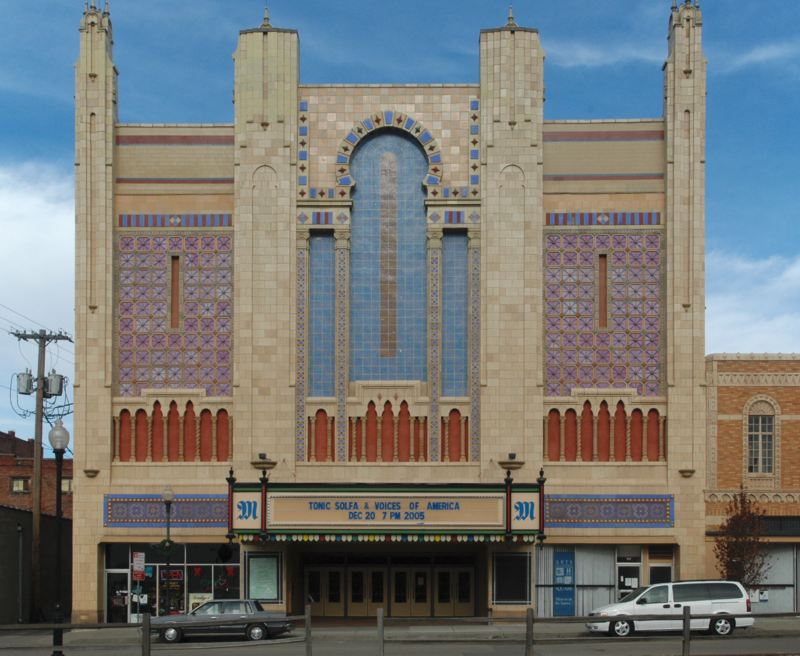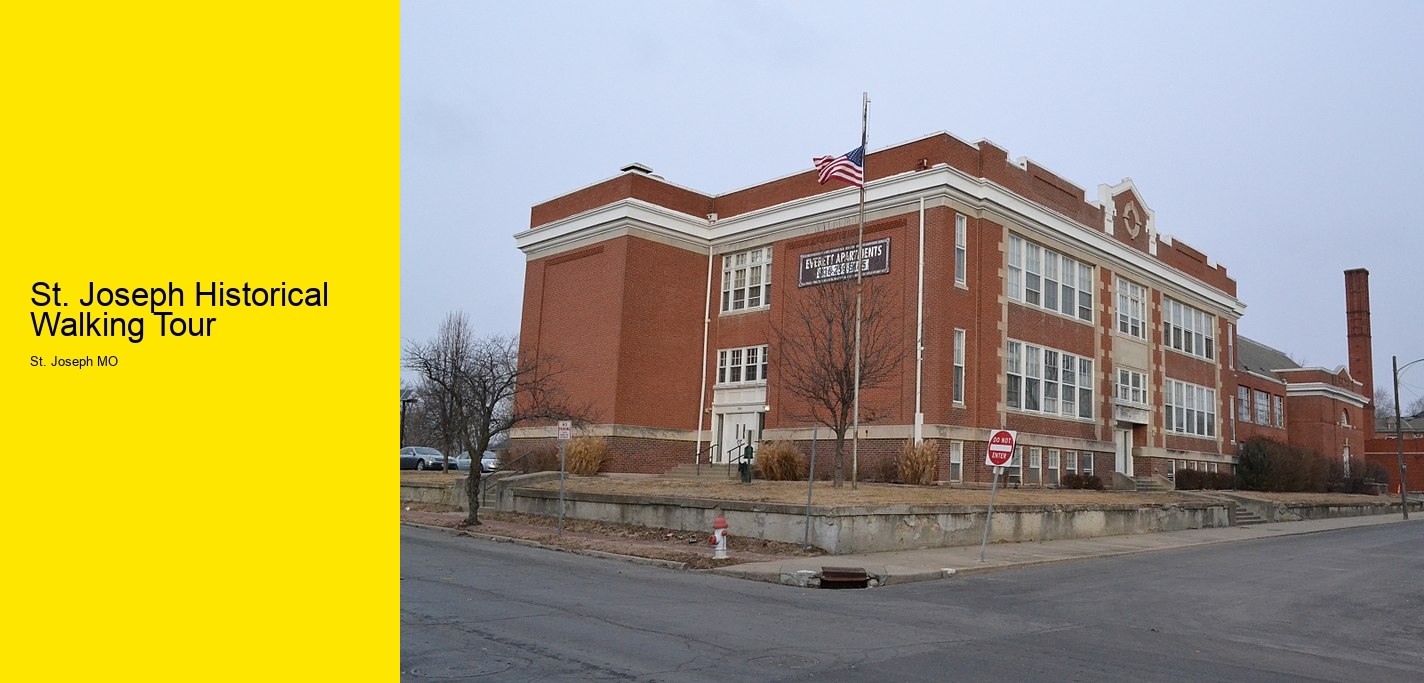St Joseph Historical Walking Tour: Explore The Rich History Of St Joseph Through Its Captivating Guided Walking Experience
The legacy of St. Joseph, Missouri, is a tapestry woven with rich narratives and vibrant moments that shaped the heartland. Visitors often encounter a challenge in grasping the depth of this city's historical tapestry, with its multitude of stories waiting to be discovered. The struggle to navigate through its storied past can be overwhelming, yet it is precisely this complexity that makes the exploration so worthwhile.
With its roots deeply entrenched in the westward expansion, this locale served as a pivotal junction, bustling with energy and ambition. The historical districts reveal tales of pioneers, outlaws, and visionaries, yet without guidance, these stories can easily go unnoticed. The experience can feel daunting, but fear not!
The delightful experience offered by this enchanting exploration ensures that every corner of St. Joseph's past is brought to life. Here are just a few highlights:
- Engaging narratives that breathe life into historical landmarks
- Knowledgeable guides who illuminate the significance of each site
- Interactive experiences that captivate and educate
- Convenient pathways that connect the dots of the city's vibrant history
From the vibrant architecture of the bygone era to the spirited tales of its inhabitants, every step unveils a new chapter. The thoughtful design of this journey means that you won't merely observe history-you'll become a part of it, forging connections that resonate long after the tour concludes. Prepare for an adventure that transcends mere sightseeing, immersing you fully in the pulse of St. Joseph's historical essence!
Key Landmarks Along the Walking Route in St. Joseph MO
Strolling through the historic streets of this charming locale, one encounters a tapestry of architectural marvels and cultural treasures. The first stop, the exquisite Missouri Theater, captivates visitors with its ornate façade and rich history in the performing arts. The building, affectionately known as the "Grand Lady of St. Joseph," showcases the city's dedication to preserving its artistic heritage.
The next gem, the Buchanan County Courthouse, stands as a testament to the region's governance and history. This impressive structure, with its striking clock tower, draws attention and admiration, symbolizing the community's pride in its civic roots. An essential tip for explorers: take a moment to admire the intricate stonework that adorns the exterior, revealing stories of craftsmanship from a bygone era.
Another notable highlight is the Glore Psychiatric Museum, a unique establishment that delves into the evolution of mental health treatment. It offers a profound insight into the human experience, serving as both an educational resource and a poignant reminder of societal progress.
- Visit during weekdays for a quieter experience.
- Consider joining a guided tour for deeper insights.
- Engage with interactive exhibits for a memorable experience.
Each landmark along this path tells a story of resilience and transformation, inviting visitors to connect with the past in a meaningful way. The local experts at the St. Joseph Museums ensure that these narratives remain vibrant and accessible, enriching the visitor experience with curated exhibitions and engaging programming.
Historic Highlights of St. Joseph, MO
In the heart of St. Joseph, numerous pivotal moments have shaped its character. From the origins of the Pony Express to the establishment of the first public library, these milestones showcase a rich tapestry of culture and progress. A stroll through the town reveals remnants of this legacy, often overlooked yet brimming with stories waiting to be uncovered.
Key Events that Define the City
Among the myriad occurrences that have etched their mark on St. Joseph, a few stand out for their profound impact:
- The founding of the Pony Express in 1860, which revolutionized mail delivery across the nation.
- The 1872 opening of the St. Joseph & Grand Island Railroad, enhancing connectivity and trade.
- The establishment of the St. Joseph Museum in 1939, preserving the region's heritage.
Exploring the Legacy
Wandering through the streets, one often encounters historical markers that narrate tales of yesteryears. A keen eye can spot architectural gems reflecting the design trends of various eras, giving insight into the evolving aesthetic values of the time. Engaging with these sites not only fosters appreciation but also a deeper understanding of the community's evolution.
Expert Insights for Enthusiasts
To truly appreciate the historic essence of St. Joseph, consider these tips:
- Visit during the golden hours of sunrise or sunset for the best lighting on historic buildings.
- Engage with local historians who often host impromptu discussions at key landmarks.
- Take photographs that capture both the grandeur and the subtle nuances of the architecture.
In the realm of preserving such a vibrant history, the local guides excel at illuminating these narratives. They curate experiences that not only highlight the city's past but also connect it to the present in a meaningful way.
St. Joseph Historical Walking Tour - Missouri River
- Union
- Pony Express

Architectural Marvels in St.
St. Joseph Historical Walking Tour - Union
- Buddhism
Joseph, MO
Exploring the intricate designs and historical significance found along the streets of St. Joseph reveals a tapestry woven with rich narratives and enduring craftsmanship. Each edifice tells a story, showcasing the evolution of architectural trends from the 19th century to modern times. The captivating structures are not merely buildings; they are monuments that embody the spirit of an era.
Notable Structures
- Missouri Theatre: An exquisite example of the Italian Renaissance style, this venue has been a cultural hub since its inception, featuring stunning murals and ornate ceilings.
- St. Joseph City Hall: A striking representation of Neoclassical architecture, complete with grand columns and intricate stonework that speaks to the ambition of early civic leaders.
- Robidoux Row: A historic block showcasing Victorian architecture, these residences illustrate the lifestyle of affluent families during the late 1800s.
Insider Insights
When wandering through St. Joseph, consider these expert tips to enhance your experience:
- Engage with local historians who can provide context and anecdotes that bring the architecture to life.
- Visit during the golden hour for breathtaking photographs that capture the warmth of the buildings.
- Pay attention to the details-look for unique architectural features like cornices, brackets, and decorative tiles that showcase craftsmanship.
The embodiment of historical significance in St. Joseph's architecture is not lost on the local community. Enthusiasts and preservationists work diligently to maintain and celebrate these landmarks, ensuring their stories endure for generations to come. The commitment to preservation speaks volumes about the care and attention given to these architectural gems, making every visit a delightful journey through time.
Cultural Influences in St. Joseph MO's Development
St. Joseph has a rich tapestry woven from diverse cultural threads that have shaped its identity over the years. The city's evolution reflects the amalgamation of various ethnicities, traditions, and historical occurrences. From the early settlers to the modern-day populace, each group has left an indelible mark on the community.
One significant aspect to appreciate is the architectural styles that illustrate the city's growth. Various styles, such as Victorian, Gothic Revival, and Prairie School, showcase the artistic inclinations influenced by the waves of immigrants. Notably, the construction techniques and materials used often mirror the origins of these groups, offering a tangible connection to their roots.
- Explore the historical districts to uncover unique structures and their stories.
- Look for hidden murals that celebrate multicultural heritage.
- Attend local festivals that highlight different cultural traditions throughout the year.
Understanding the ethnic mosaic of St. Joseph enriches the experience of wandering through its streets. The local businesses thrive on this diversity, offering an eclectic mix of cuisine that reflects the city's heritage. Culinary establishments serve authentic dishes passed down through generations, inviting residents and visitors alike to savor flavors from around the globe.
Engaging with the community through cultural events not only fosters a deeper understanding but also nurtures connections. Participating in art walks or historical reenactments can provide immersive insights into the city's past. These experiences are perfect for those eager to delve beyond the surface and appreciate the narratives that have shaped St. Joseph.
Tips for Exploring the Historical Treasures of St. Joseph MO
When embarking on a journey through the rich tapestry of St. Joseph, it's essential to keep in mind that the sights may sometimes blend together, making it easy to overlook the finer details. To fully appreciate the historical significance, immerse yourself in the stories behind each landmark.
Take your time to observe the architectural nuances. The intricate designs and craftsmanship of yesteryear tell tales of the artisans who poured their heart into every brick. Snap photos, but also take a moment to truly absorb the ambiance. Each building has character that reflects its past.
- Dress in comfortable attire and footwear; you'll want to wander without restriction.
- Consider carrying a notebook for jotting down thoughts or sketches inspired by the surroundings.
- Plan your route to include less-visited sites, where you can enjoy a quieter experience.
- Engage with locals; they often hold fascinating stories and insights that guidebooks may not cover.
What sets this experience apart is the meticulous attention to detail. The tour operators are dedicated to ensuring that every visitor has a memorable outing. They curate experiences that go beyond simple sightseeing, fostering a deeper connection with the locality.
Expert Insights for an Enriching Experience
To enhance your exploration, consider these expert insights:
- Visit early in the day to avoid crowds; the tranquility allows for a more reflective experience.
- Look for hidden gems, such as small parks or local galleries, which often provide unique perspectives on the area's history.
- Participate in guided experiences that offer in-depth knowledge and anecdotes, bringing the past to life.
Every step on this journey reveals layers of history waiting to be uncovered. Engaging with the past in such a vibrant setting is bound to leave a lasting impression.
Exploring the Legacy in St. Joseph, MO
The vibrant history of St. Joseph resonates through its streets, echoing tales of yesteryears. A common hurdle for visitors lies in fully grasping the rich tapestry of narratives woven into the fabric of this town. As one meanders through its historic locales, the significance of each landmark becomes increasingly apparent. The architecture, the stories, and the atmosphere combine to create a living museum, inviting exploration.
Such an experience is made extraordinary by the expertise of local guides who illuminate the past with enthusiasm. They curate insights that breathe life into the structures and sites, turning a simple stroll into an enlightening journey. Knowledge of hidden gems is invaluable; for instance, did you know that the Pony Express was born here, making St. Joseph a pivotal point in American history?
- Look for unique architectural styles in buildings such as the custom brickwork and elaborate cornices.
- Engage with interactive exhibits that reveal the city's role in westward expansion.
- Take note of the local flora that has historically contributed to the area's charm.
Delving into the stories tied to the sites can enrich one's understanding and appreciation. The local establishments truly embrace this narrative, offering experiences that highlight the cultural significance of St.
St. Joseph Historical Walking Tour - Pony Express
- Missouri River
- Cool Crest Garden Golf
I had an incredible experience with the St. Joseph Historical Walking Tour.
St. Joseph Historical Walking Tour - Missouri River
- Missouri Western State University
- Interstate 229




















